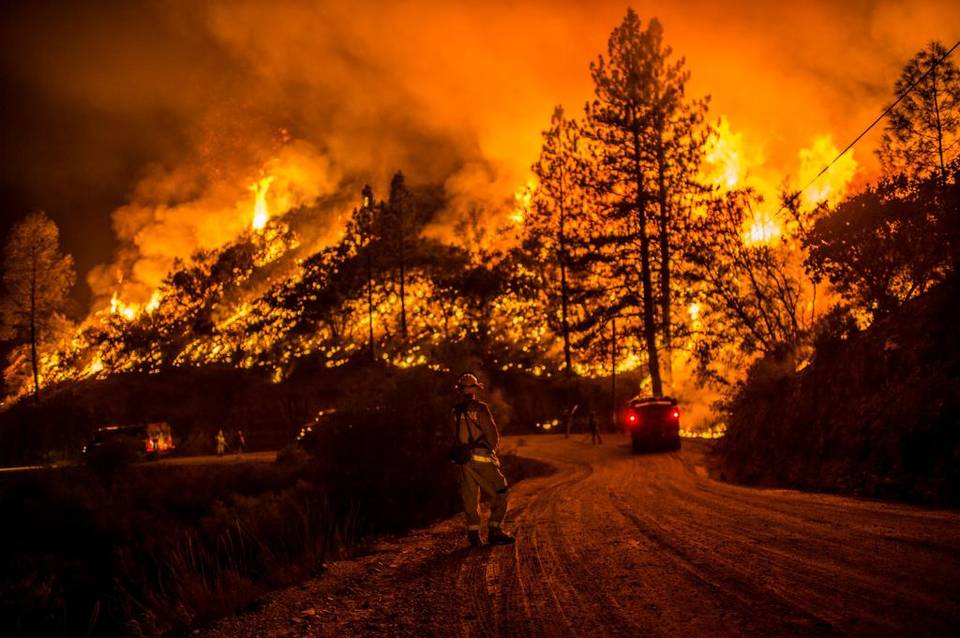A year ago last week, I was sitting in the Senate chambers waiting for the vote on AB 142, the Mokelumne River Wild and Scenic River study bill. To kill some time, I logged on to Facebook, and I learned that a fire had started near the river.
After the Senate passed the bill, I drove home heartsick, watching the smoke column grow as the Butte Fire jumped the Mokelumne and charged across Calaveras County.
My Amador County home was never threatened by the fire, but many friends were forced to evacuate. The fire destroyed more than 500 homes, transformed the landscape, and devastated entire communities. The reality of wildland-urban interface fire was brought home to our counties’ residents in the most terrible, tangible way. Calaveras will never be the same.
This year, California is again experiencing large wildfires that threaten lives, property, wildlife habitat and water quality. Climate change, four years of drought, a century of fire suppression, and the state’s failure to stem rural sprawl have created the elements necessary for the perfect firestorm.
Our forests and chaparral often burn at high intensity when the inevitable lightning strike or human activity sparks a fire. When those fires occur near rural homesites and subdivisions, firefighters must focus on protecting people and property first. That often slows firefighting efforts, resulting in larger, more destructive fires and greatly increasing suppression costs.
Meanwhile, as more homes are lost to wildland fire, insurance companies are abandoning rural communities because their level of risk is too high. People who have paid thousands of dollars a year for decades are seeing their policies canceled.
Something has to change. But what?
State leaders need to acknowledge that larger, more damaging fires may be our state’s “new normal” as climate and precipitation patterns lead to a year-round fire season and act to protect lives, property and watersheds.
The state Legislature should start by strengthening state requirements for local land-use plans. Left to their own devices, most rural counties are not going to limit sprawl development, especially when the state pays nearly all the cost of protecting homes from wildland fire.
In addition, the Board of Forestry and Fire Protection should be given authority to enforce its own recommendations for county general plans. For example, in 2015 board staff recommended that Amador County add a number of provisions to the county’s draft general plan safety element to protect lives and property. The county made some of the changes but still hasn’t fully complied with the recommendations.
The Legislature should add more detailed fire-risk disclosure requirements for real-estate transactions in high and very-high fire hazard areas. Homebuyers need to be made aware of the fire and insurance risks. And the state may need to establish or mandate special fire insurance programs for existing homes in higher fire-risk areas.
The state must also invest more in ecologically sound, forest fuel-reduction projects that reduce fire risk. This is especially important near communities and in the source watersheds that provide so much of our water supply. Insurance companies should be called upon to invest in similar projects, too. Both actions would save taxpayers and insurers money in the long run while creating jobs for rural residents.
Finally, scientists and fire managers agree that in addition to forest thinning, we must use nature’s best fuel-reduction tool, low-intensity fire, to help restore our forested landscapes wherever possible. That will require as-yet-unprecedented cooperation among fire, air quality, carbon-emission and other agencies and officials, as well as real limits on rural sprawl.
Addressing these issues will require challenging powerful interests and overcoming bureaucratic inertia. But we can no longer afford the status quo when it comes to wildland fire. The environmental, economic and social costs are much too high.
Katherine K. Evatt lives in the Volcano area, is president of the Foothill Conservancy, and a member of the Amador-Calaveras Consensus Group, which works on fire, community and forest issues. Email her at kkevatt@gmail.com.
Read the original article published September 17, 2016 in the Sacramento Bee, here.
